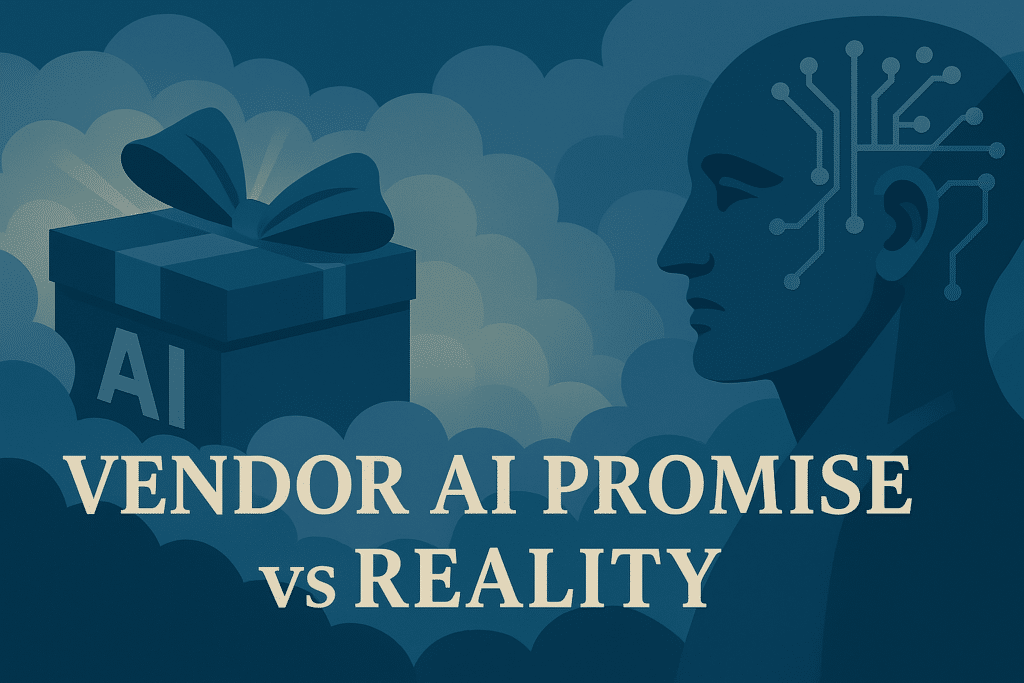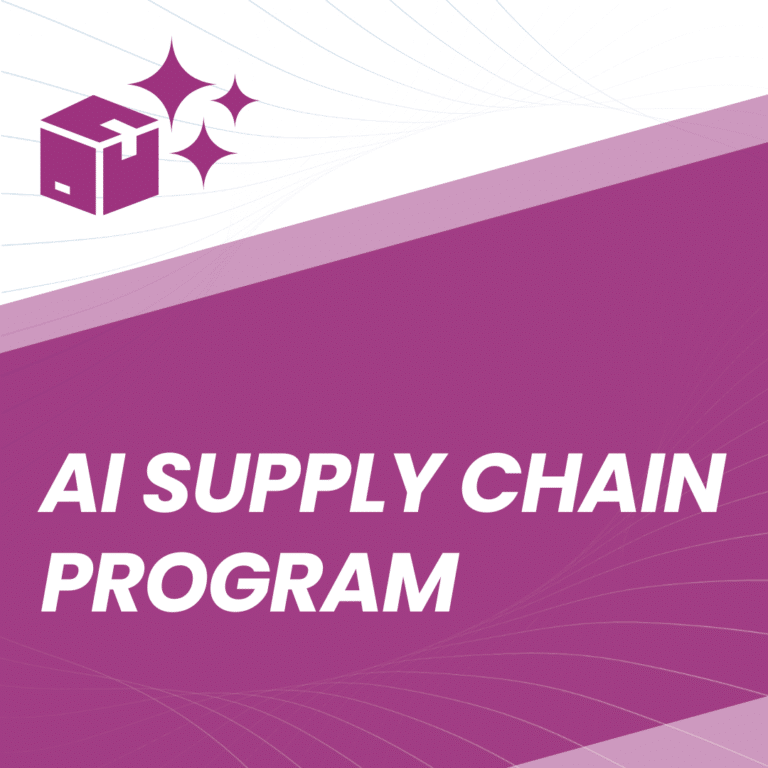
How many times have you been in the room, listening to a vendor presentation, wondering if what you see is a breakthrough or just another polished demo?
I’ve been there myself, many times. And I have to admit: I was not good at it.
Today, with AI being embedded in ERP systems like SAP, Coupa, or Netsuit, leaders face the same dilemma again: do we believe the promise, switch vendors, or build in-house? And what is the smartest path forward?
The Artificial Intelligence Vendor Promise
Vendors are masters at storytelling. Roadmaps are polished, demos carefully curated, and slides designed to spark confidence. It all feels convincing: the promise of predictive planning, automated procurement, or AI-powered forecasting.
But behind the polished narrative, complexity lurks. Integration challenges, data readiness issues, and change management often make these promises harder to realize. I’ve seen this in ERP pitches, AI add-ons, and even in smaller technology rollouts. The lesson is consistent: what looks smooth in a demo can quickly turn messy in reality.
Stay, switch, internalize : the Decision Matrix
When faced with a technological breakthrough like AI in ERP, leaders are usually left with three options:
Option 1: Stick with your existing vendor Comfort of continuity, trust in a known partner, and promises of upcoming features. But the risk is lock-in, slower delivery, and incremental innovation rather than true transformation.
=> Do this if: your data is already deeply embedded in the system, and your vendor has proven they can deliver on past promises.
Option 2: Switch to a new vendor Potentially better features, a more modern platform, and a fresh partnership. But uncertainty is high: switching costs, integration hurdles, and cultural adaptation.
=> Do this if: your current vendor has failed repeatedly, and a competitor offers clear, demonstrable value aligned with your strategy.
Option 3: Internalize development On paper, it looks cheaper and more flexible. You keep control. But in practice, it can become a swamp: endless maintenance, talent turnover, and difficulty scaling.
=> Do this if: you have exceptional internal capabilities, a clear business case, and leadership buy-in for long-term investment.
This framework doesn’t give a single right answer. Instead, it shows that each path has conditions under which it makes sense.
The Leadership Dilemma
These decisions rarely come in calm environments. They come under pressure: budget cycles, board expectations, competitive threats. Hype amplifies the pressure. When vendors wave AI banners, leaders feel they must act now—or risk falling behind.
The cost of a wrong bet is huge: sunk costs in failed pilots, morale lost when teams feel sold false promises, and strategic inertia when systems don’t deliver. Every leader I know has scars from one of these decisions.
Decoding the Vendor Artificial Intelligence Promise in Supply Chain
So how do you separate real potential from empty promise? It starts with sharper questions during demos:
- Can you show me this feature working with data like mine, not a canned dataset?
- What are the prerequisites—data quality, process changes, integrations—before this AI feature delivers value?
- What percentage of your customers actually use this feature today, in production?
- What is the timeline from demo to value, and what resources will we need to provide?
Red flags include overreliance on future roadmaps, vague claims about “AI capabilities,” and lack of customer references. Credible vendors are transparent about limitations, prerequisites, and adoption rates.
A Strategy, Not a Shortcut
AI in ERP is real. It will shape planning, procurement, and operations. But leaders must approach it not as a magic shortcut, but as a strategic choice. Each option—stay, switch, internalize—has its place, but only if chosen with clarity about context and capability.
It’s not about rejecting promises. It’s about knowing which ones to believe, when to act, and how to lead through the complexity that follows.
Key points to remember on Artificial Intelligence Vendors in Supply Chain
How should we decide between staying, switching, or building in-house?
Match the option to your context. Stay if your vendor delivers and your data is embedded. Switch if a competitor shows clear, proven value. Internalize only with strong talent, a solid business case, and leadership commitment.
What questions should we ask during an AI demo?
Ask to see features on data like yours, list prerequisites, share adoption rates in production, and define the path from demo to value with required resources and timeline.
What red flags signal vendor hype?
Heavy reliance on future roadmaps, vague AI claims, no production references, and unwillingness to discuss data quality and process prerequisites.
How do we reduce the risk of a wrong bet?
Run a limited pilot with clear KPIs, decision rights, and exit criteria. Validate integration effort early, include change management, and require reference calls with live users.
What KPIs should track time to value?
Time from contract to first production decision, decision latency, exception rate, forecast accuracy or service level, rework hours, and user adoption by role.
When is internal development worth it?
When AI capability is core to your strategy, you have stable teams and platform skills, and you can support long-term maintenance, security, and scalability.


